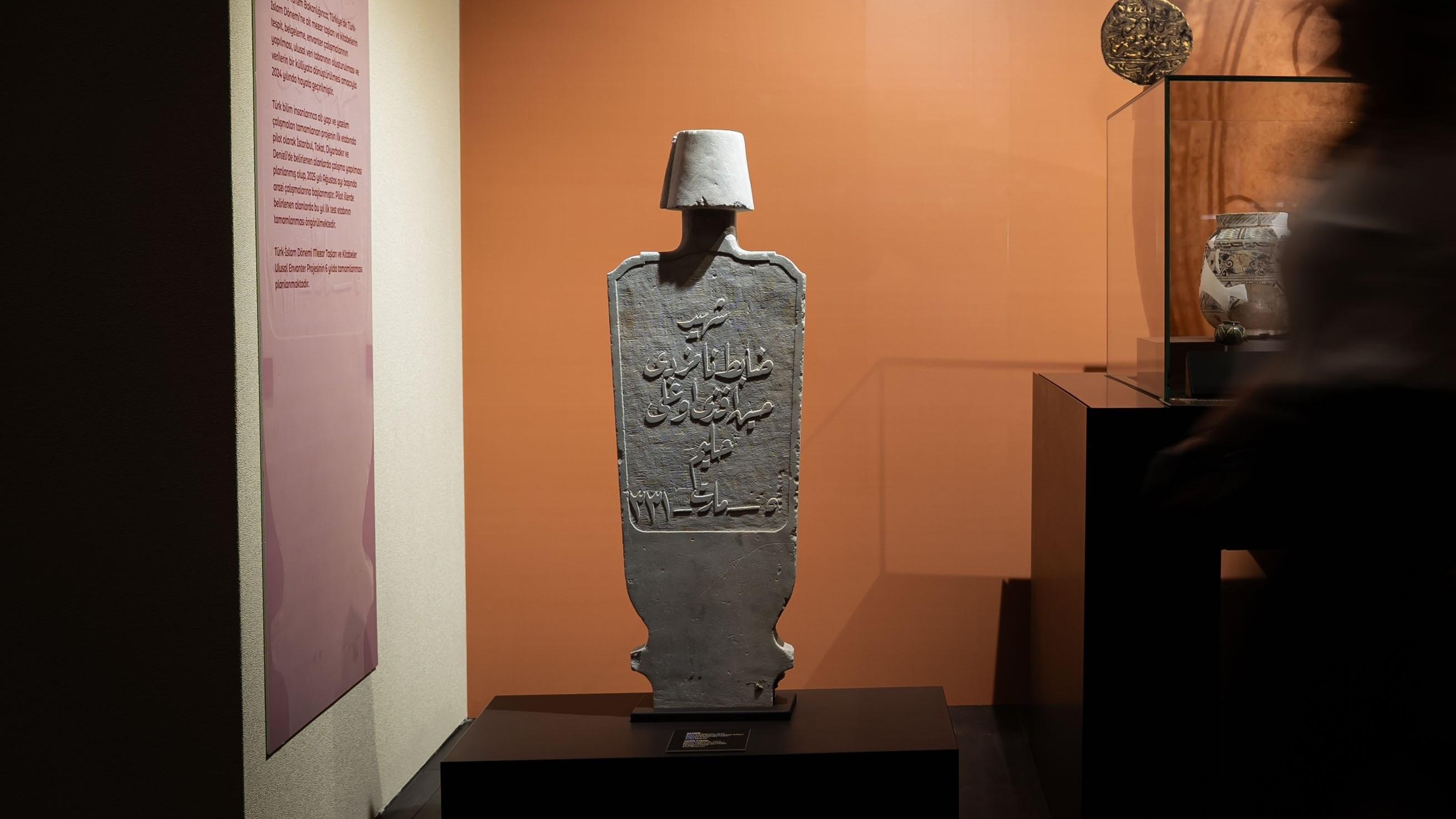
The Culture and Tourism Ministry has embarked on a landmark six-year project aimed at reading, documenting, restoring and conserving tombstones from the Turkish-Islamic period, notably involving the creation of a comprehensive digital archive and compiling an extensive body of work to be passed down to future generations.
The project has commenced in four key provinces: Istanbul, the northern province of Tokat, the western province of Denizli and the southern province of Diyarbakır.
The announcement came alongside the opening of the “Golden Age of Archeology” exhibition at the Presidential Library in the capital Ankara, where 485 newly unveiled artifacts are on display.
Bülent Gönültaş, Deputy Director General of the ministry’s Cultural Heritage and Museums, said that one of the exhibition’s highlights is an Ottoman-era tombstone with a compelling story, which became a driving force behind the project’s development.
The tombstone commemorates a fallen officer cadet, Halim Efendi, who died on March 18, 1915 — the first day of the Gallipoli naval battles. It was discovered during fieldwork and subsequently transferred to the Troy Museum.
“We identified the tombstone as belonging to officer cadet Halim Efendi, who was martyred at the Dardanos Battery on that historic day,” Gönültaş explained.
Following the identification, a dedicated exhibition space was established in the Gallipoli Battles section on the top floor of the Troy Museum.
The museum also reached out to the soldier’s surviving family members, inviting them to the exhibition.
The project’s primary aim is to systematically catalog all Turkish-Islamic tombstones across Türkiye, perform restoration and conservation and develop a digital archive along an exhaustive reference library.
To expedite the work, the ministry has organized Ottoman Turkish language courses for museum experts, ensuring they are equipped with the necessary skills.
After building the infrastructure and software systems, specialized teams began pilot work in the selected provinces this year, with full completion expected within six years.
He also noted the intensified archaeological focus on Turkish-Islamic sites in the past two decades, highlighting ongoing research in regions like Ani, Malazgirt, Karacahisar and Silifke castles, which continue to enrich Türkiye’s historical narrative.